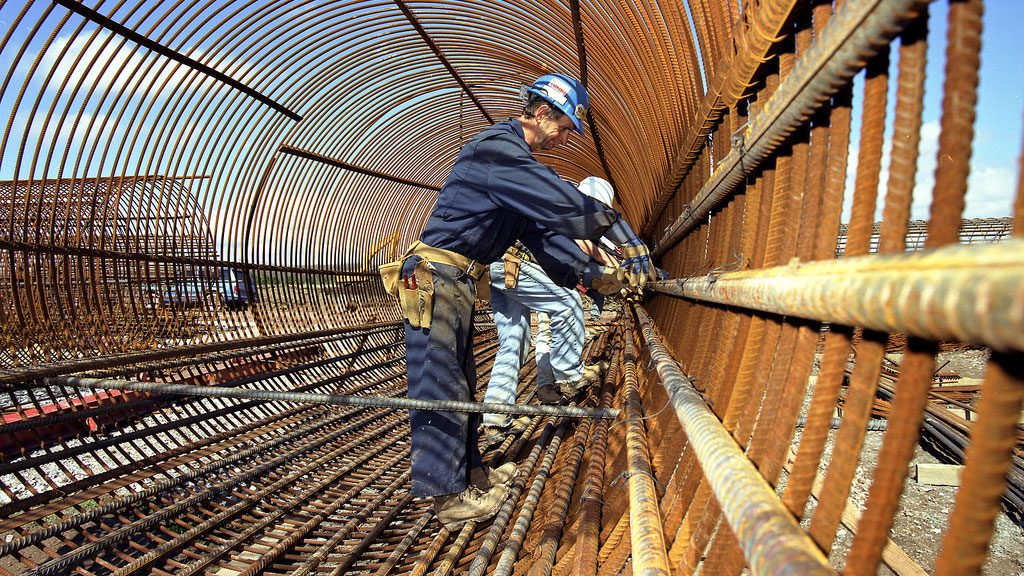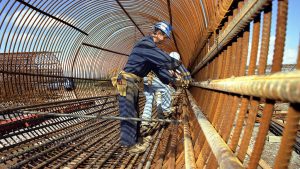As Premier Doug Ford noted in remarks at a recent Building Diversity Awards event, the construction industry is the backbone of the economy.
Indeed, the recovery of Ontario from COVID-19 — and that of Canada — is largely tied to the health of construction.
Housing’s share of Canada’s GDP, for example, spiked to a record 9.3 per cent in the final quarter of last year, double the historical norm and up sharply from 7.5 per cent a year earlier.
However, there is a significant obstacle on the horizon that could derail the industry and threaten any economic rebound, namely a looming shortage of skilled labour.
According to recent reports, we might not have enough skilled trades workers down the line to fill positions. Ontario’s construction and maintenance industry will need to hire and train nearly 104,000 additional workers over the next 10 years to keep pace because the industry is growing and baby boomers are retiring.
Contractors are already anticipating problems. A survey by the Ontario Construction Secretariat found that 56 per cent of contractors expect to have greater difficult accessing skilled labour in 2021.
Thankfully, the provincial government has taken steps to address the problem in Ontario with the announcement of the Building Opportunities in the Skilled Trades Act which will establish a Crown agency called Skilled Trades Ontario that will replace the embattled Ontario College of Trades.
Labour, Training and Skills Development Minister Monte McNaughton brought forward this long-awaited legislation to help apprentices prepare for in-demand jobs and complete their training faster. It will make the system better by making it more accessible to apprentices and easier to navigate.
RESCON and the builders we represent are excited about the agency as it will create a clearer pathway for youth interested in pursuing an apprenticeship.
The agency will also work to help end the stigma around careers in construction and simplify the apprenticeship system from the start to finish.
Importantly, the new agency will conduct research into the skilled trades and apprenticeships so that the province and employers will be able to anticipate what trades will be most needed down the road.
There is tremendous buy-in and support from the industry for the agency. Homebuilders, LIUNA, the Provincial Building and Construction Trades Council of Ontario and Merit Ontario are all on board.
The new agency will provide a one-stop-shop for apprentices, employers and journeypeople.
It will handle apprentice registrations, develop training and curriculum standards, issue certificates and licences, and maintain a public register of qualified trades. The Ministry of Labour, Training and Skills Development will be in charge of compliance issues and ensuring that the rules are followed.
Skilled Trades Ontario is just one piece of the puzzle, though. To ensure we have enough trades for the future, there are other very important steps that must be taken.
We must boost immigration of people who want to work in the trades, expand the Red Seal system to allow more interprovincial mobility and enhance opportunities in the trades for women and Black youth.
Presently, women make up only seven per cent of the skilled trades workforce in Ontario. We’re doing better than B.C. where the figure is 6.2 per cent but are behind the U.S. where it’s close to nine per cent and the U.K. where it’s at 10 per cent.
There’s no reason why more women aren’t in construction, whether it be on worksites or in other professions in the industry. We clearly still have a lot of work to do.
We have suggested that the province increase its support for skilled trades programs with proven high placement and retention rates to further enhance skilled trades opportunities for women and Black youth.
Federally, expanding the Red Seal system to allow more interprovincial mobility of trades workers, meanwhile, would allow skilled trades to take jobs in other provinces when work slows near home. Presently, tower crane operators, elevator installers and mechanics are missing from the Red Seal program, while we are facing shortages of these trades in Ontario. This needs to be fixed.
Immigrants have long been a staple of the trades and we must allow more people into the country who are interested in working in those occupations. The federal government should be looking at providing immigrants a pathway into the trades through temporary foreign worker programs.
Trades such as carpentry, concrete and drain, sewer and watermain, and bricklaying are very much dependent on immigration and we need to ensure that pipeline of workers does not dry up.
One option would be to increase the allocation number for Ontario’s Immigration Nominee Program. This would give the province some flexibility to recruit for specific skilled trades occupations. A trusted employer program could also be started within the Temporary Foreign Workers Program. This would reward compliant businesses with a streamlined process to hire workers.
Construction is open to everyone and there are plenty of future career opportunities for youth. Setting up Skilled Trades Ontario is a step in the right direction. Hopefully, it opens a pathway for other initiatives.
Richard Lyall is president of the Residential Construction Council of Ontario. Send Industry Perspectives comments and column ideas to editor@dailycommercialnews.com.











Recent Comments
comments for this post are closed